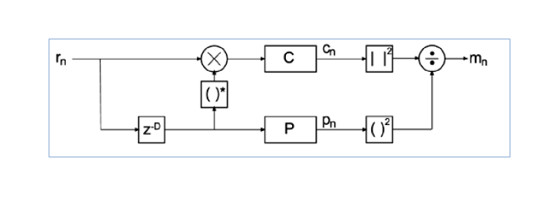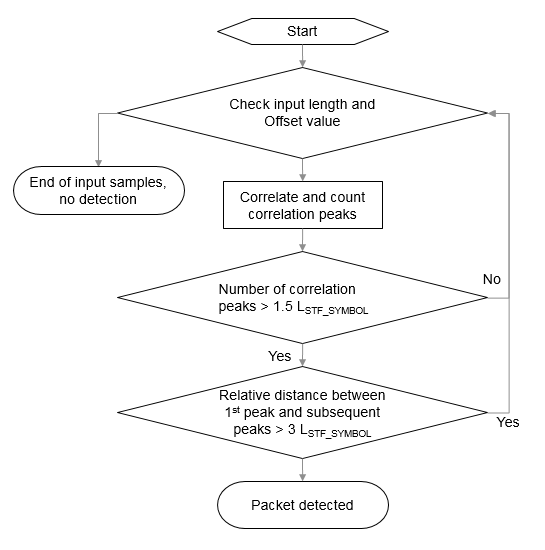wlanPacketDetect
Estimate timing offset of OFDM packet using L-STF
Syntax
Description
startOffset = wlanPacketDetect(rxSig,cbw)rxSig and the
start of the detected preamble for channel
bandwidth cbw. The function
uses the legacy short training field (L-STF) for this
estimation. For more information, see Packet Detection Processing.
Note
This function supports packet detection of OFDM modulated signals only.
startOffset = wlanPacketDetect(rxSig,cbw,offset)
startOffset = wlanPacketDetect(rxSig,cbw,offset,threshold)
startOffset = wlanPacketDetect(___,OversamplingFactor=osf)
[
also returns the decision statistics of the packet
detection algorithm for any of the input argument
combinations in previous syntaxes.startOffset,M]
= wlanPacketDetect(___)
Examples
Input Arguments
Output Arguments
More About
Algorithms
References
[1] Terry, J., and J. Heiskala. OFDM Wireless LANs: A Theoretical and Practical Guide. Indianapolis, IN: Sams, 2002.



